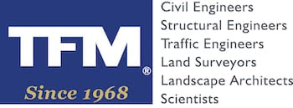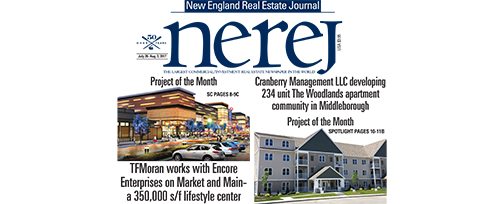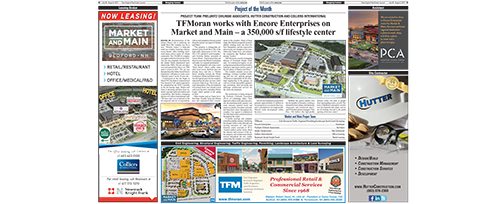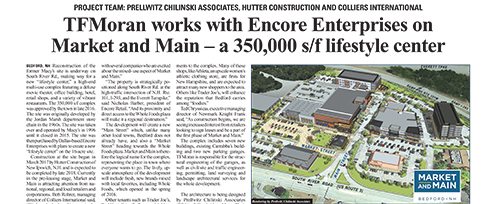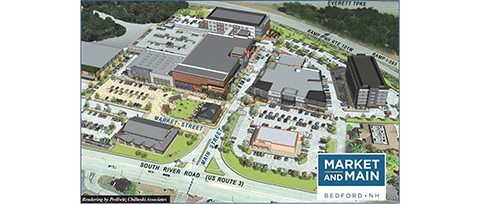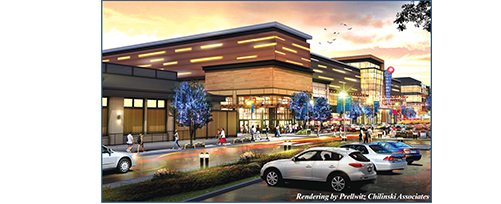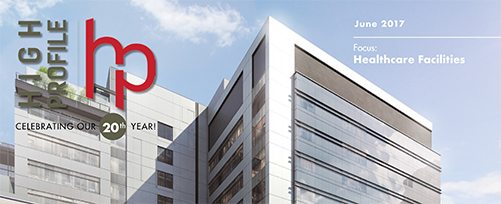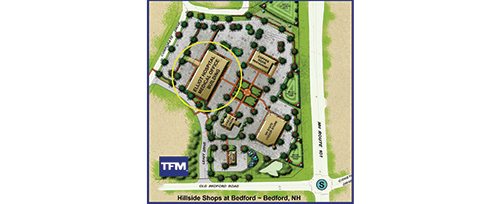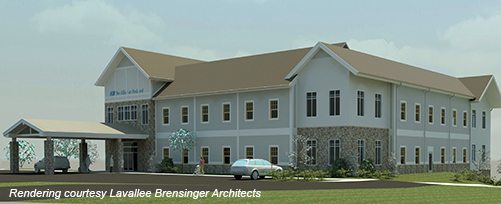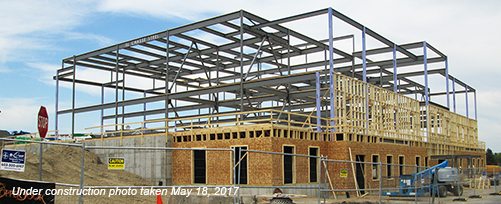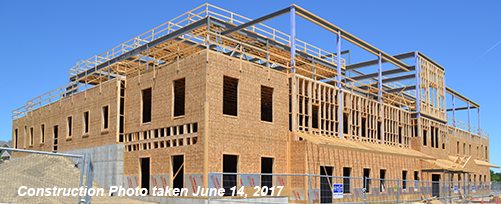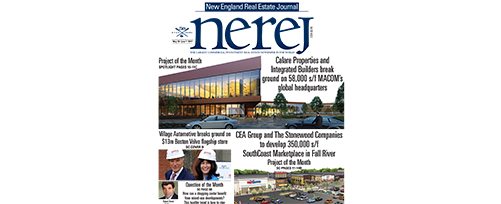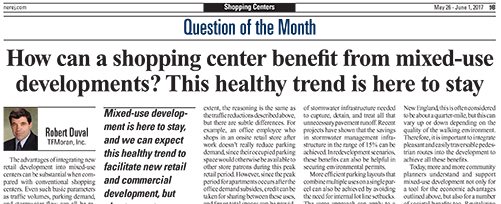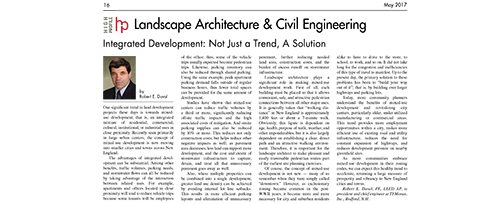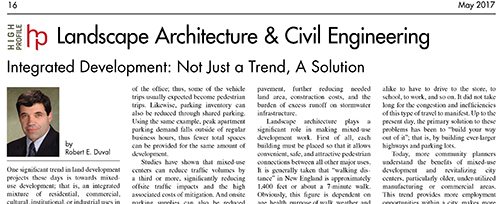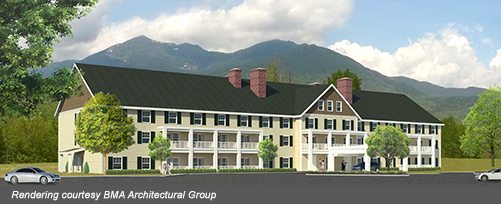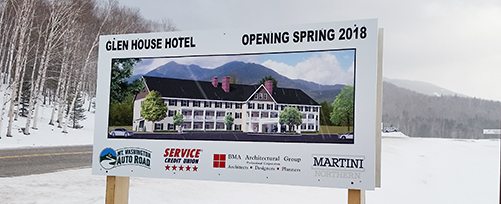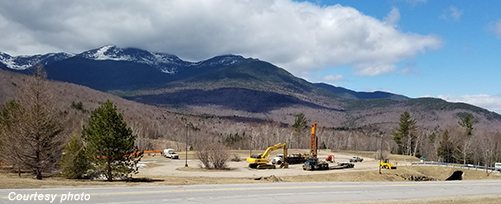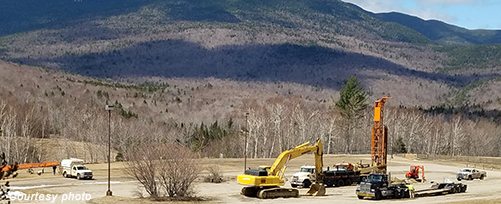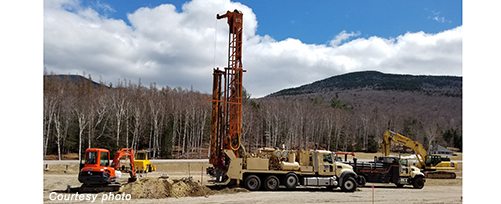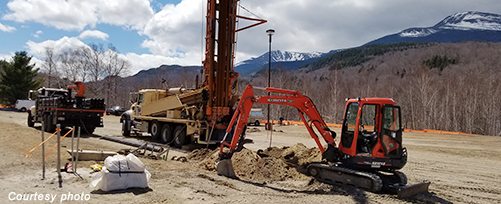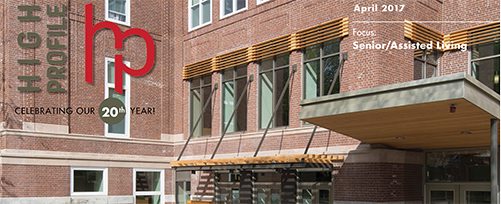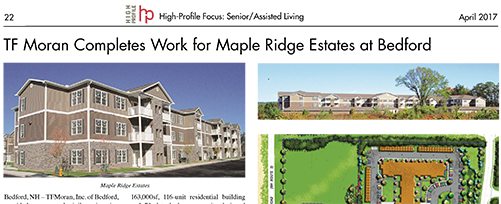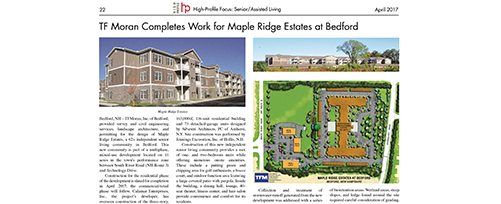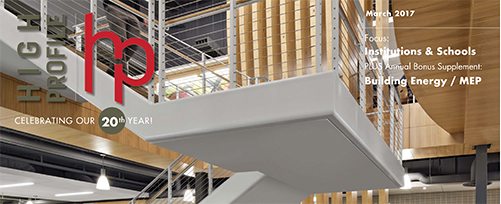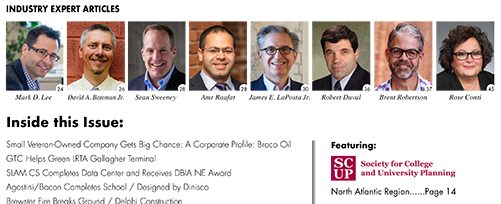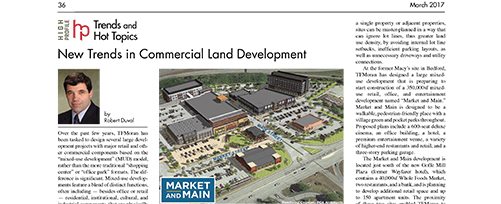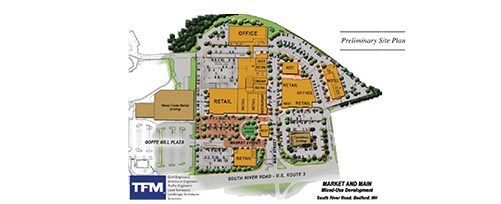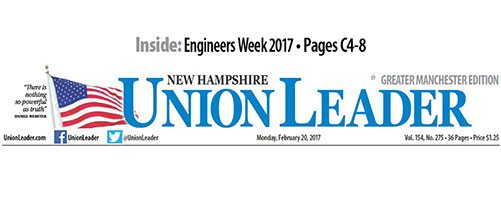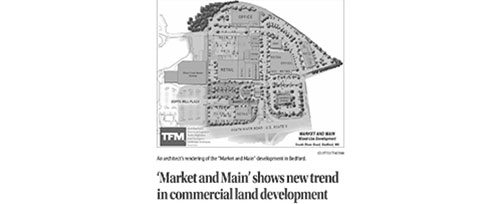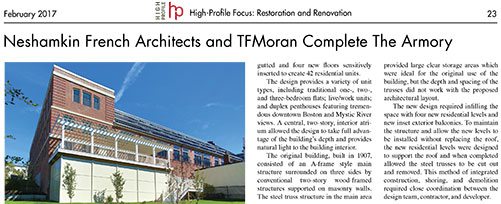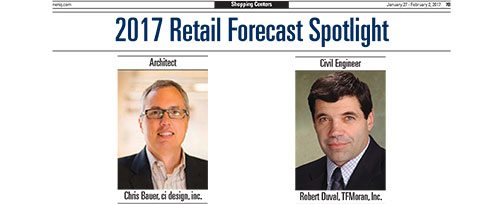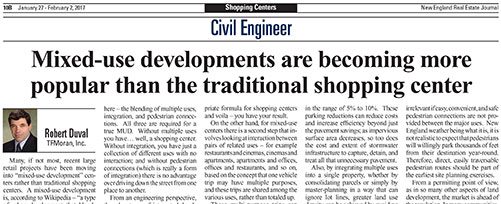In New England Real Estate Journal’s July 28 – August 3, 2017 issue in the Shopping Centers section, is one of TFM’s exciting multi-use developments under construction on South River Road in Bedford, NH. (former Macy’s site). TFM is proud to be a significant part of this team, working with the owner Encore Enterprises of Dallas, Texas, the project architect Prellwitz Chilinski Associates of Cambridge, Mass., Hutter Construction of New Ipswich, NH and Colliers International.
To learn more about this exciting project, please read below or click on this NEREJ article to open a pdf: TFMoran-Project-of-the-Month-in-NEREJ July 2017
Project of the Month
Project Team: Prellwitz Chilinski Associates, Hutter Construction and Colliers International
TFMoran works with Encore Enterprises on Market and Main – a 350,000 s/f lifestyle center
Bedford, NH – Reconstruction of the former Macy’s site is underway on South River Road in Bedford, New Hampshire, making way for a new “Lifestyle Center”, a high-end multi-use complex featuring a deluxe movie theater, office building, hotel, retail shops, and a variety of vibrant restaurants. The 350,000 sf complex was approved by the Town in late 2016. The site was originally developed by the Jordan Marsh department store chain in the 1960s. The site was taken over and operated by Macy’s in 1996 until it closed in 2015. The site was then purchased by Dallas-based Encore Enterprises with plans to create a new “lifestyle center” on the 16-acre site.
Construction at the site began in March 2017 by Hutter Construction of New Ipswich, NH and is expected to be completed by late 2018. Currently in the pre-leasing stage, Market and Main is attracting attention from national, regional, and local retailers and corporations. Bob Rohrer, Managing Director of Colliers International, said, “We have had a lot of interest in the development and are in negotiations with several companies who are excited about the mixed- use aspect of Market and Main.”
“The property is strategically positioned along South River Road at the high-traffic intersection of NH Route 101, I-293, and the Everett Turnpike,” says Nicholas Barber, President of Encore Retail. “And its proximity and direct access to the Whole Foods plaza will make it a regional destination.”
The development will create a new “Main Street”, which – unlike many other local towns – Bedford does not already have, and also a “Market Street” heading towards the Whole Foods plaza. Market and Main is therefore the logical name for the complex, representing the place in town where everyone wants to go. The lively, upscale atmosphere of the development will include fresh, new brands mixed with local favorites, including Whole Foods, which opened in the spring of 2016.
Other tenants such as Trader Joe’s, Red Heat, Friendly Toast and Athleta have also announced their commitments to the complex. Many of these shops, like Athleta, an upscale women’s athletic clothing store, are firsts for New Hampshire, and are expected to attract many new shoppers to the area. Others like Trader Joe’s, will enhance the reputation that Bedford carries among “foodies”. Ted Chryssicas, Executive Managing Director of Newmark Knight Frank, stated that, “As construction begins, we are seeing increased interest from retailers looking to sign leases and be a part of the first phase of Market and Main.”
The complex includes seven new buildings, existing Carrabba’s building and two new parking garages. TFMoran is responsible for the structural engineering of the garages, as well as civil/site and traffic engineering, permitting, land surveying and landscape architectural services for the whole development.
The architecture is being designed by Prellwitz Chilinski Associates of Cambridge, MA. Their approach reflects both past and present; incorporating brick, granite, cast stone masonry, painted wood, and metal in a palette of modern materials and historical colors throughout the complex. Eye appeal is emphasized for individual tenants and harmonized throughout the center. “Colorful awnings and canopies extend beyond the entrance, sheltering the shopper while on the sidewalk and inviting customers in,” says Laura Homich, Senior Associate of PCA. “Seated outdoor patios nicely blend the interiors and exteriors of the entire property, and architectural details reoccur throughout the site, visibly connecting the complex as a whole”, continues Laura. The new development is expected to generate approximately $1 million in new property tax revenue for the Town, and is anticipated to be a high-profile lifestyle center development within the Town.
“Bedford has grown rapidly over the last number of decades, creating a demand for more shops, entertainment, restaurants, and commercial space,” says TFMoran’s Project Manager, Chris Rice. “We believe this high-profile lifestyle center will draw in people from surrounding towns, as well. The Town of Bedford is pleased to see this new development take shape, and we are all looking forward to the grand opening of the new center.”
